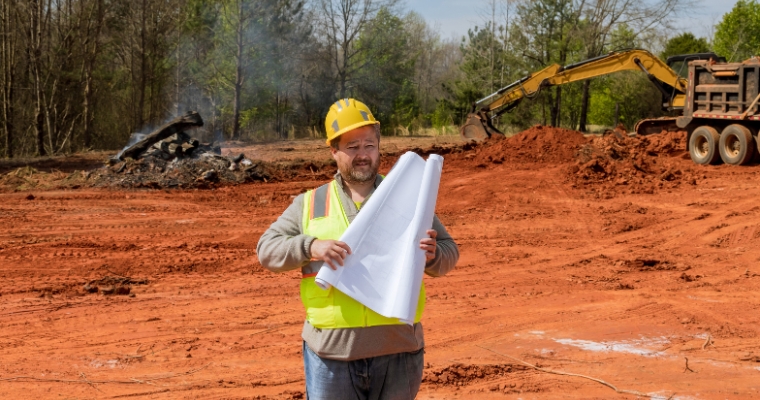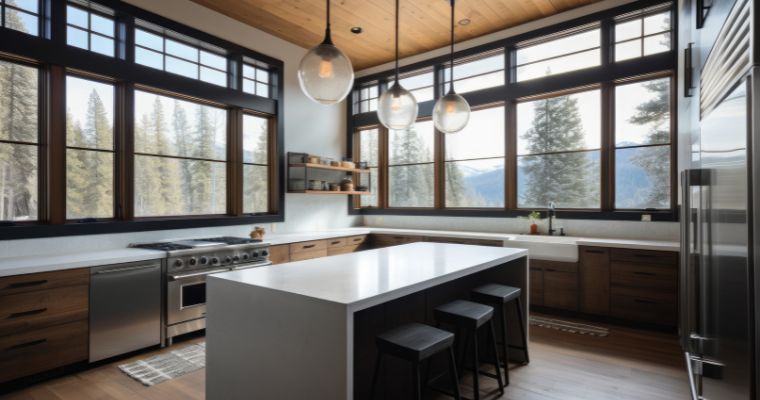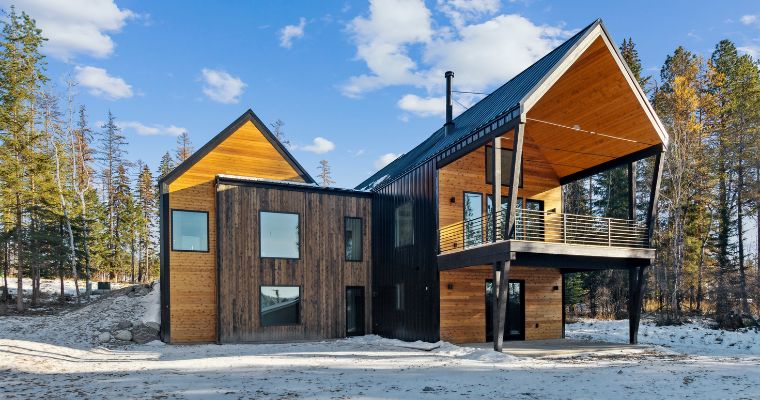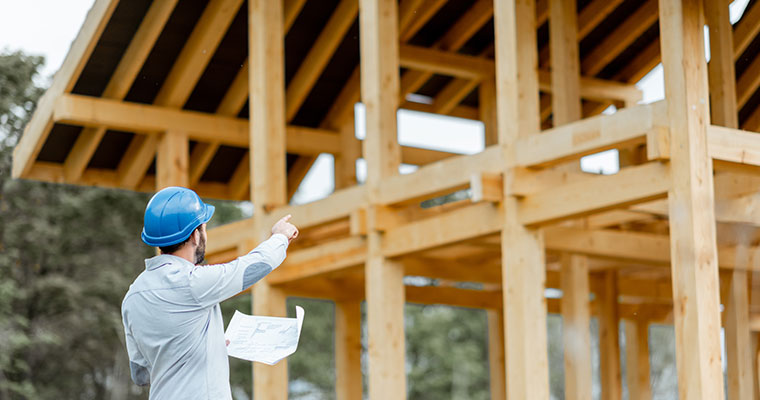Cost to Build a House in Whitefish, MT – What To Expect When Building
Dreaming of a custom home tucked between Whitefish Lake and the peaks of Glacier? Before sketches become studs, you’ll need a clear picture of what building a home in Montana really costs—and how smart, sustainable choices can stretch every dollar.
This guide breaks down each expense, from land purchases to hidden fees, and shows you how to balance mountain-town luxury with long-term efficiency.
So, what is the cost to build a house in Whitefish MT?
Building costs in Whitefish can range from $400 to $750 per square foot—well above the average cost per square foot to build a house in Montana—depending on factors such as:
- Land Costs
- Labor Costs
- Material Costs
- Site Preparation
- Permits & Inspections
- Architectural Plans & Engineering Fees
- HVAC Installation
- Construction Costs
Let’s explore these factors in detail and navigate the path to building your dream home responsibly.

What are the Costs Involved in Building a House in Whitefish, Montana?
The cost to build a house in Montana—especially in Whitefish—can be broken down into several crucial stages, each with its own set of variables to consider. Here’s a thorough exploration into these key factors:
1. Land Costs:
Finding the perfect plot sets the foundation for your dream.
Costs can vary dramatically depending on location, size, and existing amenities.
According to the Montana Land Report, Whitefish area vacant land prices can range from $25,000 per acre for raw land to upwards of $300,000 per acre for lakefront property with stunning views.
Aim to dedicate a specific percentage of your overall budget to land acquisition, leaving sufficient funds for construction.
2. Labor Costs:
Labor is one of the most significant expenses in any construction project. In Whitefish, the demand for skilled labor—especially those experienced with energy-efficient and sustainable construction—is high.
- Hourly wages billed to homeowners for trades such as carpenters, electricians, and plumbers generally fall between $50 and $130 per hour. National pricing guides list $50–$130 for residential electricians and $30–$200 for carpenters, with most Montana jobs landing in the middle of those ranges.
- General-contractor fees typically range from 10 % to 20 % of the total project cost, reflecting industry-standard mark-ups for project management and risk.
Keep in mind that building in a rural, resort-driven market like Whitefish can push rates toward the upper end during peak season. Hiring a well-reviewed local team helps avoid costly delays.
3. Material Costs:
Your choices here shape both the sticker price and the lifetime performance of the house.
- Statewide benchmark: Recent build-cost guides peg about $50 per sq ft for materials on a standard Montana home.
- Cost share rule-of-thumb: Industry research suggests materials make up ≈ 65 – 80% of total construction expenses.
- Sourcing locally milled lumber and stone can trim freight emissions and keep more of your budget in the Flathead Valley economy.

4. Site Preparation:
This stage involves preparing the land for construction, including excavation, foundation work, and installation of utilities like wells and septic systems.
Depending on the slope and soil conditions of your chosen property, excavation costs can range from $3,000 to $10,000 per acre.
Foundation work can vary based on the size and complexity of your home, but generally falls within the $20,000 to $40,000 range for a typical single-family home.
5. Permits & Inspections:
Building permits, inspections, and compliance with local regulations are non-negotiable steps.
Permitting fees can vary depending on the size and complexity of your project.
They typically range from $1,000 to $5,000 in Montana.
Factor in additional costs for inspections throughout the construction process, which are typically a percentage of the overall project value.

6. Architectural Plans & Engineering Fees:
Working with a qualified architect and structural engineer ensures a safe, structurally sound, and aesthetically pleasing design.
Architectural fees can range from 8% to 15% of the total construction cost, while structural engineering fees typically fall between 5% and 10%.
7. HVAC Installation:
Heating, Ventilation, and Air Conditioning (HVAC) system installation costs depend on the chosen system size and efficiency.
In Whitefish, where cold winters are a reality, a high-efficiency furnace and air conditioning system can cost anywhere from $10,000 to $20,000+, depending on the size of the house and requirements of the project.
8. Construction Costs:
This includes the cost of materials, labor, and any unforeseen expenses.
Location, size and complexity of the design, materials chosen, and local labor rates significantly impact this aspect.
As mentioned earlier, Whitefish construction costs can range from $400 to $750 per square foot.
Building with high-quality, eco-friendly materials might increase upfront costs, but can lead to significant long-term savings on energy bills.

What Are the Indirect Costs to Build a House in Montana?
While direct construction expenses like land, labor, and materials make up the bulk of your budget, indirect costs can quietly add up—and it’s important not to overlook them. These behind-the-scenes expenses often influence your overall financial planning and construction timeline.
- Financing & Interest Fees:
Unless you’re building with cash, you’ll likely be financing your project. Construction loans usually come with higher interest rates than traditional mortgages—currently about 6% – 8% APR for well-qualified Montana borrowers, and up to ~10% for riskier profiles—along with origination fees of roughly 0.5% – 2% of the loan amount. Over the life of the loan, these charges can add thousands to your bottom line, so be sure to factor in interest payments made during the building phase. - Insurance:
Homeowners insurance doesn’t cover a structure under construction. Instead, you’ll need builder’s-risk insurance, which protects against theft, fire, or weather damage. Typical premiums run 1% – 5% of the total project value—about $1,000 to $5,000+ for a $500k–$1 M build. - Utilities Hook-Up Fees:
Even if your home is eco-friendly and energy-efficient, it still needs to connect to utilities unless you’re completely off-grid. Water, sewer, electricity, and internet hookups generally total between $6,500 and $30,000, depending on how remote your lot is and whether new lines must be run. - Temporary Housing & Storage:
Building takes time—often 9 to 18 months. During this period, many homeowners rent a temporary home or apartment nearby. Storage units add another line item. Price varies depending on size and amenities. - Landscaping & Exterior Finishes:
Your home’s surroundings matter just as much as its interior. While basic new-construction landscaping averages $3,000 – $16,000, full backyard makeovers (patios, retaining walls, hardscaping) can easily hit $15,000 – $50,000 or more. Opting for native plants and low-water landscaping can keep costs down and align with sustainable living principles.

Finding the Right Builders and Contractors
Building your dream home requires a skilled and experienced team of home builders in MT.
Partnering with experienced luxury builders in Whitefish, Montana, who know the area’s unique geographical features is crucial. They can manage permitting processes, source materials efficiently, and ensure the construction adheres to local building codes.
Ready to turn your vision into reality?
Contact Eco Residency today to discuss your dream home and explore how our local expertise can help you navigate the building process in a sustainable and cost-effective way!
Budgets and Timelines
Developing a realistic budget and timeline is essential for a smooth building process.
Collaborate with your builder to create a detailed cost breakdown considering all the aforementioned factors.
While unexpected costs can arise, thorough planning and communication with your team will minimize surprises.
Build an Eco-Friendly House to Save Money in Montana
Building an eco-friendly house in Whitefish offers not only environmental benefits but also long-term cost savings.
Here’s how:
- Benefits of an Eco House: Energy-efficient appliances, solar panels, and water-saving fixtures can significantly reduce your utility bills over time. Utilizing sustainable building materials like recycled wood or locally sourced stone can minimize environmental impact while potentially offering cost benefits.
To show you what it means to have a home in Montana that enjoys these benefits, take a look at one of our successful projects.

158 Mountain Brook Lane
Imagine a stunning 2,500 sq ft eco-friendly home situated on a one-acre lot overlooking Whitefish Lake.
This dream house utilizes sustainable materials, boasts energy-efficient features like solar panels and geothermal heating, and features low-flow plumbing fixtures.
While the initial building costs might be slightly higher compared to a conventional build, the long-term savings on utilities and the environmental benefits are compelling.
FAQs
Yes, you can. However, navigating the construction process requires knowledge and expertise. Partnering with a reputable builder and architect will ensure a smooth and successful project.
The answer depends on several factors. In general, building a house allows for greater customization and energy efficiency, potentially leading to long-term savings. However, the upfront costs of construction can be higher than purchasing an existing home.
In 2025, building a custom home in Whitefish typically ranges from $400 to $750 per square foot. The total cost depends on factors like land location, site prep, design complexity, material quality, and labor rates. Eco-friendly features may raise initial costs slightly but often lead to long-term savings.
Whitefish’s high housing costs stem from limited land availability, increased demand from out-of-state buyers, and premium materials and labor. Its stunning scenery, access to outdoor recreation, and desirable lifestyle also drive up property values, making it a sought-after, and pricier, place to live.
Conclusion
Building in Whitefish demands more than an eye for mountain vistas—it requires a clear grasp of every dollar that goes into land, labor, materials, permits, indirect fees, and forward-thinking upgrades that keep energy bills low long after move-in day.
By mapping these costs early, partnering with experienced local pros, and prioritizing eco-friendly choices, you safeguard your budget, your comfort, and Montana’s natural beauty all at once.
If you’re ready to turn careful planning into a custom home that pays dividends for decades, reach out to Eco Residency today and let’s start laying the first sustainable stone together.

